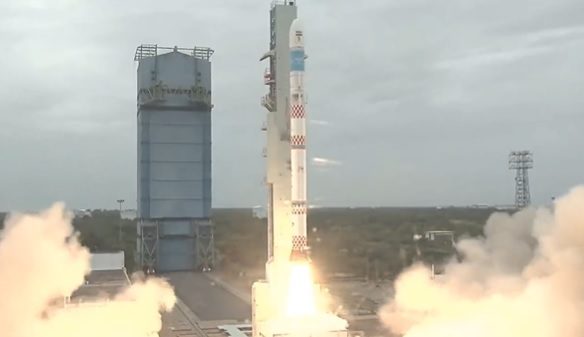The maiden flight of India’s latest rocket, the SSLV, has gone wrong. After an apparently successful launch from the Satish Dhawan Space Centre, in Sriharikota, at 0348 GMT on 07 August, things began to unravel.
The rocket’s upper stage and payloads (which appeared to have separated) failed to achieve a fully stable orbit and the assembly re-entered before a full circuit of the Earth was completed. The Indian Space Research Organisation (ISRO) reported that a sensor failure, combined with the failure of computer logic to note this error, led to the Velocity Trimming Module (VTM) upper stage failing to adapt its orbit into a circular 356 km. Only an unstable fractional 356 x 76 km orbit was achieved, whose low perigee meant that satellites and the upper stage were grazing the atmosphere to the point that they decayed within an hour.
SSLV was designed as a fast response launch vehicle able to lift 500 kg payloads into orbit at short notice and with minimum infrastructure. A four-stage rocket, using three solid rocket stages and a fourth liquid storable propellant stage, the VTM provides roll control for the second and third stages during a launch. It carries eight thrusters acting as its main propulsion, eight for attitude control and it can carry spacecraft to different orbits. It was this VTM upper stage that went wrong.
Aboard this first test flight were two satellites:
- EOS-02, a 142 kg Indian medium resolution (6 m resolution) earth observing/remote sensing satellite developed by ISRO for cartography/urban and rural mapping, and
- AzaadiSat, an 8U CubeSat of mass 8 kg. Seven hundred students from across India designed and built the satellite with ISRO’s help. It carried 75 Femto experiment payloads of mass 50 g each. It also carried a UHF-VHF amateur radio (voice and data) transponder and a long-range transponder, and an ionising radiation counter. The satellite also had a small camera to take images of itself.
In an amusing understatement, ISRO simply said that EOS-02 and AzaadiSat were “no longer usable”. The reality was that they re-entered so quickly after injection that the surviving debris of the satellites fell into the sea.
Comment by David Todd: While this is a setback for ISRO, the maiden flights of new launch vehicles have a notoriously high failure rate – more than 40 per cent according to the Seradata SpaceTrak database. Nonetheless, ISRO will be keen to avoid a persistent series of failures.
NASAspaceflight provides fuller detail on some of the previous test failures here.









